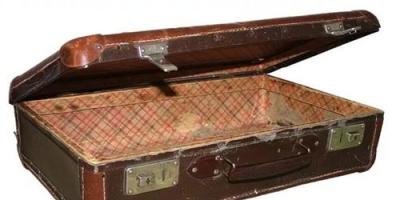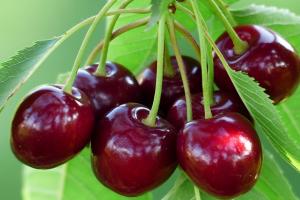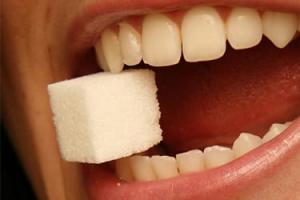Wood is one of the most popular construction and decorative materials. However, some applications require higher material performance parameters. This concerns strength and resistance to negative external influences.
To improve the basic parameters of the material, there are special processing technologies, one of which is wood stabilization. It allows you to create durable, practical and attractive materials with unique characteristics.
Benefits of the procedure
Stabilization is a special type of wood treatment that involves safely filling the pores with protective compounds.
Its main purpose is to maintain decorative properties wood with increased strength, hardness and resistance to external factors. A similar effect is achieved through the use of special compounds that have the ability to polymerize.
This is a rather labor-intensive and responsible process, the organization of which must be approached with full responsibility and the sequence of actions must be followed in accordance with the chosen technology.
Thanks to conservation, wood acquires the following characteristics:
- density and hardness;
- resistance to high moisture, temperature changes and ultraviolet radiation;
- flame resistance;
- impermeability to paints and varnishes;
- resistance to chemical and biological influences;
- inertness to deformation and rotting;
- decorativeness and aesthetics;
- susceptibility to manual and mechanical processing.
Methods
The technological process of wood stabilization is divided into two stages - impregnation and polymerization.
Depending on the type, size and quality of the raw material, as well as taking into account your own capabilities and preferences, you can stabilize wood in the following ways:
- Cold impregnation. Most affordable way stabilization of small workpieces, which involves soaking the wood in a cold composition. The duration of impregnation ranges from 3 days to 2 weeks depending on the type of raw material. Various oils are used as preservatives - nut, tung, hemp and linseed.
- Hot impregnation. Complex option conservation of bulk wood products. The duration of impregnation can be up to 2-3 days and ensures deeper penetration of hot compounds into wood fibers.
- Vacuum treatment. Similar method processing involves the use of a vacuum chamber. Evacuation of air from the chamber is accompanied by removal of the existing liquid from the wooden blank placed inside. Next, a stabilizing solution is fed into the chamber, which is designed to fill the open pores of the wood.
- Pressure processing. This method is similar to the previous one, the difference is that wood conservation is carried out using high pressure, not vacuum. The wooden blank is placed in a container with liquid and installed in the chamber. Under the influence of high pressure, air is removed from the pores, and the voids are filled with a polymerizing composition.
Stabilizing compounds for wood
Many craftsmen who want to master the technology of preserving wood products at home are interested in the main question - how to stabilize wood?
There are many effective means which are used for similar purposes:
- oils,
- paint and varnish compositions,
- epoxy resins,
- liquid glass,
- brine,
- drying oils,
- Birch juice,
- compositions for vacuum processing,
- polymers.
Epoxy resin
Epoxy resin is often used to stabilize wood. To increase fluidity, it is recommended to dilute the composition with alcohol. The technology for stabilizing wood with protective epoxy resin is similar to that suitable for working with polymer components.
Despite its availability and ease of application, epoxy resin has some disadvantages. The main ones are: the duration of polymerization and the likelihood of boiling vacuum chamber. In addition, such a product is not suitable for preserving coniferous wood.
Liquid glass
During the processing of wood with liquid glass, a thin layer is formed on the surface. protective film, resistant to other dyes. For this reason, liquid glass is often used to stabilize structural elements or decorative products that are not subject to further treatment with protective compounds.
Liquid glass, or silicate glue, provides reliable protection from infection by mold, mildew and pathogenic microorganisms. Compared to other antiseptic compounds, it is resistant to high moisture, ultraviolet radiation and high temperatures.
Brine
Less popular for stabilizing wood is saline solution. To prepare it you will need 1 tbsp. l. salt and liter cold water. Processing of a wooden blank is carried out by boiling for 2-3 hours.
Many experts claim that such a preservative can be used after preparing a specific piece or wood product.
Drying oil
The main components of drying oil are vegetable oils, subjected to heat treatment. Preheating oils increases their resistance to increased moisture and ultraviolet radiation. A special solvent in drying oil increases viscosity and ductility, which makes it possible to use it for the preparation of putty and primer mixtures, varnishes and paints.
Drying oil is widely used for processing wooden structures, decorative elements and tools. It provides reliable protection against rotting, destruction and deformation. To stabilize wood indoors, it is better to use natural drying oil, composite and alkyd compositions are suitable for outdoor work.
Composition for vacuum chamber
For the vacuum chamber, a special composition is used to stabilize the wood. This saturation technology (impregnation) provides a penetration depth of the protective agent from 0.3 to 5 cm depending on the type of wood, while the pressure in the vacuum chamber can reach 12 kg/sq. cm.
The specialized sealed device has impressive dimensions: length – up to 15 meters, diameter – from 0.5 to 3 meters. It is equipped with a special reservoir for stabilizing solutions, inlet valves, pressure sensors and a control unit.
The duration of one saturation cycle can be from 3 to 6 hours.
Birch juice
No less popular is the preservation of wood using natural birch sap. The workpiece is exposed to the composition in a vacuum chamber, and then dried at a temperature of 90 degrees.
To prepare a stabilizing solution, various dyes are added to birch sap.
Polymers
Modern polymer-based impregnations are often used to stabilize wood. The most popular of them are:
"Anacrol-90"
Polyester impregnation for wood that is exposed to high temperatures turns into a thermosetting polymer. Due to its high strength, resistance to chemical attack and temperature changes, the composition is widely used for the preservation of small cracks and pores in wood.
"100therm"
A transparent liquid composition based on thermosetting polymer components is intended for reliable conservation of wood. It is convenient and easy to use, suitable for application in industrial and home environments.
"Buravid"
A transparent polymer composition, including optical pigments, which is intended for the polymerization of wood. Its viscosity and density resembles water, but when exposed to temperature it turns into a hard coating. Provides protection from moisture, ultraviolet radiation, biological contamination, and emphasizes the natural structure of wood fibers.
"Pentacryl"
Alkyd-based enamel with the addition of dyes and fat-soluble pigments. Designed to stabilize wood inside and outside. The processed material has the unique properties of polymers, but at the same time remains natural and safe, like wood.
Unstabilized wood is prone to changes in internal structure and color, deformation and cracks. If the material is used for internal decorative finishing, then this problem is especially relevant. You can buy ready-made stabilized wood, the cost of which will be much higher than that of untreated material. And you can save money by organizing the conservation process yourself using available protective equipment.
For these purposes, you can use ready-made polymer compositions - Pentacryl, Anacrol 90 and others - or prepare them yourself.
Impregnation compositions should be selected with a small margin, because some of the product will be used for test work, after which you can begin preserving the wooden workpiece or product.
Choosing the right protective agent for a specific type of wood and following the steps technological process will allow you to get the desired result.
Hmm... this topic interested me when I decided to make a knife... or rather a handle for a knife. I doubt, of course, the academic validity of this term. For example, in an article about wood bending I used the phrase “wood stabilization” in a different sense - as the ability of the wood structure to restore its physical properties. Chemical properties after exposure to temperature, solvents (in a broad sense) and physical influences that temporarily change the plastic properties of wood. So that article was more about stabilizing a curved shape... and the article climbed to the top on the topic of this article.
Agree that when you come across articles that do not correspond to the request based on a specific request, you begin to get annoyed either with the search engine algorithms or with the authors of such materials. Therefore, in order for site visitors to learn something useful, I will write what I know about this. Review article... in places.
So, under wood stabilization most understand the result of a kind of “preservation” of wood, in which it operational properties improve by an order of magnitude.
Wood can be preserved or stabilized using different materials:
Impregnation with hot linseed oil (environmentally friendly and food-grade option);
Impregnation with various exotic natural oils, for example, poppy, nut, hemp, white acacia, lalemantia, pine and spruce seed oils, elderberry, wood (tung), perilla, niger... (all oils listed in the article completely polymerize, i.e. become hard... for comparison, sunflower oil does not polymerize)
Boiling wood in oleoresin (resin) coniferous species);
Chelyabinsk sleepers are so harsh because they are impregnated with coal oil;
Impregnation with wax, both natural and with artificial additives;
Impregnation with artificial compounds that, when dry, form hard material, for example, varnishes, paints, impregnations, drying oils, liquid plastics (polymers)…
One of these days I will combine natural “stabilizers”: linseed oil, beeswax (an excellent antiseptic) and carnauba wax (the most shiny, hard and refractory) for impregnation cutting board*** for food products. I will melt the wax in a water bath in linseed oil and soak it hot.
On the left is granulated purified beeswax, on the right are strips of carnauba wax (feels like brittle plastic).

The essence remains the same - a preservative substance is introduced into the pores and cells of wood, which can react with the “wood” and/or which polymerizes on its own.
Wood stabilization technology can be roughly divided into two large stages:
Impregnation process and
Polymerization process.
You can soak it in the following ways:
Cold impregnation (suitable for small and thin workpieces);
Hot: holding/cooking in hot compositions, which are usually more fluid when hot and polymerize better;
Using a vacuum method (wood is placed in a chamber from which air is pumped out, it also comes out of the pores of the wood... and is filled with a preservative compound that penetrates well into them);
Under pressure (wood is placed in a chamber and in a stabilizing composition, and overpressure... under pressure, the air in wood practically disappears in volume, and its place in the pores is taken by a preservative composition).
Polymerization process Both pressure and temperature can help. For example, when bamboo is treated with heat, the sugar it contains caramelizes, giving the bamboo wood new and improved properties and Brown color different shades.
Wood that has undergone a stabilization procedure is usually:
Much heavier;
Has a different color, depending on the technology and materials used (for example, green pores);
It has stabilized physical and chemical properties of the polymer, reinforced with wood fibers, which change little under the influence of adverse conditions.
[comments/discussion]
| Kirill Boronin (15:01 10/27/2017) Hello. Carving from wood various products, asked to make a mortar and pestle. I’m thinking of making it out of beech, but I would like to maximize the wood’s resistance to friction. I usually saturate my work with mineral oil and beeswax. Is flax, tung, or some other safe material suitable for my purposes? food products oil-wax mixture? How much stronger will the wood become? |
| VECCHIO ALBERO (06:47 05/21/2017) Good afternoon, I am interested in the stabilization of wood slabs large sizes, what composition is better to use, and what method of stabilization is best suited for this? Thank you |
| Andrew (00:58 05/07/2017) Andron, I think such bars are filled with multi-colored polymers, much like in the “drawing on water” techniques. Look in the search. |
| Andron (16:39 05/06/2017) Hi all! Tell me how to stabilize pieces of wood in two or more colors? Thank you |
| Andrew (07:36 03/24/2017) Alexey, all methods of “real” stabilization of large boards and shields are quite expensive and labor-intensive. Among the relatively accessible ones we can highlight vacuum method. One of the simplest but least effective methods is impregnation with hot oil. Most likely it will only be saturated upper layer and therefore it is advisable to use open-pore wood such as ash or oak. Or you can look towards thermowood - it is more stable, but it can still lead. As an experiment, you can try saturating the wood with a two-component primer for exotic wood. This soil has a viscosity like water and when dry it becomes like “glass”. |
| Alexey (16:21 03/23/2017) Hello. I am interested in stabilizing a solid-lamella Shield that will be located on the street, what is the best method to use so that it does not move. Cold impregnation, hot impregnation, vacuum methods, under pressure, or maybe some other method? Maybe add wax? Which polymerization method is better to use and will there be a difference? |
| Andrew (20:36 03/10/2017) Maxim, the essence of stabilization is the complete impregnation of wood. It is impossible to saturate logs in a finished house. Even if you just saturate the top layer of the timber, it will take a long time and be expensive. |
| Maxim (05:53 03/07/2017) Hello. Interested in log stabilization, more precisely log house. What is the best way to do this and with what???? This is how I use linseed oil the best option?!?!?! |
| Andrew (20:56 01/05/2017) Of course you can. Depends on the effect you want to achieve. Dyes and pigments must be compatible with wood stabilizing agents |
| Elnur (13:21 01/04/2017) Is it possible to add dyes to obtain unusual colors of wood, and which ones are better (pigments, dyes, fat-soluble) |
| Andrew (02:59 08.12.2016) I answer such questions by mail. |
| Marseille (13:05 04/21/2016) I am interested in stabilizing large-sized wood (steps, stringers, carved sculptures, etc.). |
|
Kozhevnikov Nikolay Gennadievich(19:11 25.03.2015) Kind...! I don’t know your name and patronymic, I hope we’ll meet you. I would like to find out the following: is it possible to make a blank for the butt and fore-end of a hunting rifle from stabilized wood? |
Stabilized (polymerized) wood is wood impregnated through and through with monomers and acrylic resins(other substances can also be used, but the composition we use is not toxic (confirmed by a hygienic certificate) stabilization is also possible with dyeing through one or more colors.
Below are the advantages of stabilized wood and the nuances of working with it.
NOT subject to climate change, that is, it is not afraid of temperature and humidity changes.
DOES NOT crack, deform, or change geometric shapes
Withstands heating up to 90-100 *C
DOES NOT absorb water (no more than 4%, untreated wood
under equal conditions absorbs 30-35%)
Has high hardness (even the softest rocks #vavona)
Has high strength
Excellent processing by turning, milling, planing
Excellent polishing (to a varnish shine)
Bright appearance, while the dyes used have high light resistance and do not fade when exposed to sunlight and do not fade over time
# The materials used for impregnation are non-toxic. According to the system of effects on the body, it belongs to hazard class IV. According to the Russian classification, materials belonging to class IV are not hazardous.
1. N recently stabilized wood should not be dissolved thin plates, since during the drying process of the resins, the plates may lead
2. Stabilized wood may lose its polished shine during use, so it is recommended to create a protective layer using oils containing tung oil ( Danish Oil, Teak Oil)
3. Stabilized wood does not absorb moisture, but natural cavities, eyes and cavities can absorb liquids
4. When sanding, stabilized wood produces fine dust, so it is necessary to use a respirator and proper ventilation
5. Stabilization of each wood species occurs differently; some species can absorb 50% of monomers, and some 20%. There are also species that cannot be stabilized at all, such as backout and rosewood (# ebony)
It all depends on the density of the tree, the presence of resins in it and the structure of the wood.
Wood- This natural material and may have unique characteristics such as voids, cavities, eyes, bark, rot and many other things that differentiate one lumber from another. Stabilizing wood will provide additional density, hardness and improve the characteristics of the wood, but will not fill voids or change the natural imperfections of the wood. If you are working with very porous wood. Be prepared for additional processing of defects (filling voids, etc.), but the result will exceed all expectations.
To work with wood, a carpenter uses his hands and equipment. Even if the craftsman has enough experience, unprepared wood can ruin all efforts. This indicates the need to stabilize the material. If you do not expose it to such influence, the structure may dry out and warp.
When working with soft varieties such as aspen, linden and pine, you will notice that this requirement is not so critical, since they are not used for responsible structural elements. But a cracked window casing or a dried out spoon can still ruin your mood.
Making chairs and kitchen fronts, such wood is rarely used. The issue of material predictability finished product important for carpenters. To prevent cracking and warping, there are methods, one of which is stabilization.
Technologies can be different, some are complex, others are simple, and others are completely high-tech. Today it is common to use concentrated acids and apply heat and pressure to the wood. This is difficult to do at home.
But if you do not intend to retreat from the idea, then you can pay attention to the Solovetsky Monastery, which has stood for several centuries. Some elements of the building have not been affected by time. Decorative details, roofing and steps do not violate the idea of wood durability. The secret is the salt. To stabilize wood at home, you will need to prepare electric stove and a bucket.
Using salt for stabilization
To prevent cracking and warping of wood, you need to prepare a tablespoon of salt per 1 liter of water. Some masters use different concentrations. The wood will need to be boiled in salt water until the active release of foam stops. This will indicate that the material is ready.
Stabilizing wood at home at the next stage involves drying the workpieces. They must be removed from the liquid and left at room temperature. If there is a stove, then the elements can be placed on top of the firebox. In just three days you will receive stabilized material.
Some craftsmen claim that the cherries will need to be dried for a very long time, sometimes this process takes up to 2 years. By appearance stabilized wood and regular wood will be different. The part that was in the brine will darken a little. You can scrape and sand the surface. Color shades can be aligned. Wood sometimes takes on a pearlescent tint.
What happens during stabilization

After reviewing the information above, you were able to understand that the external appearance of the material changes after stabilization. If you are interested in what processes occur inside, then you can remember that wood is a mixture of ether-containing components, lignin and cellulose.
The first component of coniferous species is resin. Rosin and turpentine are made from it. As for grenadil, this ingredient makes up an oil with a specific taste and smell. If you want to understand why the material “relaxes” after stabilizing wood at home, you can imagine cellulose as reinforcement, while lignin becomes concrete.
Exposure to temperature will destroy the bond between these materials, as a result of which reinforced concrete becomes plastic. Internal tension will be relieved. Enough important role At the same time, salt plays. It makes the boiling point above 100 °C, which is enough to destroy the cell membranes of wood.
Main goals of stabilization

Stabilizing wood at home may be necessary to speed up drying many times over. This distinguishes the process from the natural one. Using this technique allows you to eliminate warping and eliminate cracks during and after drying. Wood acquires antiseptic properties and becomes more durable.
Description of the impregnating composition "ANACROL"

If you are looking for a substance for stabilization, then you should consider Anacrol-90. It is an impregnation mixture made from dimethacrylic polyester, which cures into a thermosetting polymer at a temperature of 95 °C.
The material is resistant to impact chemical substances type:
· alkalis;
· alcohols;
· antifreeze;
· petroleum products;
· transmission oils;
· dissolving salts;
· acid solutions;
· freons.
The main area of application of Anacrol-90 is the elimination of corrosion, sealing in micropores and microcracks of porous structures. The composition is compatible with sealing technologies, wet and dry vacuum, wet vacuum-pressure and dry vacuum-pressure methods. The size of microdefects can reach 0.1 mm.
The mixture includes a latent polymerization initiator, so the chemical properties are stable at long-term storage. The impregnation process can be easily controlled. Its duration and curing time are minimal. Stabilized wood can be subjected to hydro- and pneumatic tests, as well as pressure testing.
The composition is removed from the surface by washing in water. On environment it has no harmful effects. Wastewater is decomposed in biological treatment plants. In order to obtain stabilized wood, you will need to consume 3.5 g per kilogram of material, which is slightly more compared to the consumption liquid glass. Polymerization is non-shrinking, which guarantees high-quality sealing for the entire service life of the product.
Properties of liquid material

The chemical base is dimethacrylic polyester. Specific gravity reaches 1.10 g/cm³. In appearance, Anacrol is a mobile liquid that can have colors from light yellow to brown. Dynamic viscosity can be 15 mPa*s. Typical curing time at 95°C is 8 minutes.
Properties of the cured material

The cured material can be used in air at temperatures from -60 to +180 °C. Short-term exposure to temperatures can reach 200 °C. Without oxygen, the temperature range expands and ranges from -60 to +250 °C.
Instructions for use

The stabilization process with the substance described above includes two stages: impregnation and heat treatment. The impregnation method is selected depending on the type of wood you will be working with. The most accessible and simple technology is natural impregnation. The bars are immersed in a container with a substance, and the effect is carried out naturally due to the capillary effect.
Stabilization of wood with Anacrol at this stage takes up to 2 weeks. The tree stops absorbing the substance, after which the finished bars sink. It is recommended to monitor absorption using a scale, as some samples may not sink due to physical properties or the presence of closed pores. During this time, almost any tree will be soaked to its full depth.
Wood stabilization liquid can also be used for vacuum impregnation. For this purpose it is used special camera. The bars are completely immersed in a container, which is sent to the chamber. Air is pumped out of it. Due to the abundance of oxygen coming out of the bars, the composition begins to boil. The process ends, and then the products are kept in this state for about 60 minutes. After the return of atmospheric pressure, the bar is not removed, but remains in the liquid for another day.
Using birch sap
Stabilizing wood with birch sap is also quite popular. The technology remains almost unchanged. The composition must act on the material in a vacuum, and then the workpieces are exposed to a temperature of 90 °C. According to the principle of imported branded stabilizers, the substance is mixed with dyes. The composition is transparent. It is easy to dilute it with pigments that hardly change color.
Application of polymers
Buravit Expert acts as polymers for stabilizing wood. This one-component substance eliminates problems with dosing and mixing the activator. The composition is characterized by high penetrating abilities. After baking, it becomes harder and denser, allowing the stabilized bars to reduce moisture absorption.
“Buravit” for stabilizing wood has a transparent color. Its viscosity and density can be compared with the density and viscosity of water. The polymerization temperature reaches 90 °C. In the process, it becomes harder and denser. You can use the substance at home. It contains optical additives that highlight the structure of wood.
Finally
Wood without stabilization can change its structure and color over time, warp and become cracked. If you use it for interior decoration, this question is especially relevant. You can purchase stabilized material in the store, but it is much more expensive than regular, untreated material.
If you want to reduce drying time, stabilization is especially recommended. You can carry out such work yourself. For this purpose, the market today offers many solutions, among them various polymers and mixtures such as Anacrol-90 should be highlighted.
- Process principle
- Main advantages of processing
- Epoxy resin treatment
- Oil impregnation
The technology has been developed to create completely new materials with the desired characteristics. It is well known to craftsmen who often work with methyl methacrylate polymer and other bases that give wood strength. The article describes the intricacies of such a process.
Process principle
This processing method is conservation, which gives the wood durability and high strength while preserving the decorative qualities of the original material. Stabilizing wood means filling its pores with agents that can polymerize or harden. These are paints, oils, resins and varnishes. The technology is complex, but if you strictly follow it and be careful, you can get strong and beautiful wood that is resistant to negative factors. Decorative items made from it will serve their owners for many years without losing their properties.
Benefits of processing
Stabilized wood is superior to untreated wood in terms of decorative and technical specifications. Its structure becomes dense, resistance to temperature fluctuations and humidity increases, and properties are added that extend the service life of products. The stabilizing composition makes the material inaccessible to the harmful effects of ultraviolet radiation. In the event of short-term contact of wood with open fire, the polymer for stabilizing the wood retains all its characteristics unchanged.
Material of natural origin after processing is not impregnated with oil and becomes impenetrable to organic matter and solvents. Preservation reveals the decorative qualities of lumber, making it much easier to work with. Valuable and durable rocks tend to age and deteriorate over time. Oak or ash are deformed, dry out or, conversely, swell from dampness, but stabilized wood is reliably protected from wear, which is what polymers do.
Technological process of stabilization
To properly stabilize natural material and getting the desired result will require a special approach, albeit at home. First of all, you need to ensure temperature regime, pressure level and vacuum. The master will need components to prepare a stabilizing composition or a ready-made product - anacrol or methyl methacrylate.
Very often, blanks are used for the production of decorative elements and souvenirs, therefore Special attention is given to the texture with a beautiful natural pattern. From hardwood wood: chestnut, birch and maple - they make boxes, knife handles, figurines, furniture parts.
Stabilizing wood at home begins with impregnating pieces of material with methyl methacrylate. There are several types and technologies of impregnation. A workpiece of small thickness is impregnated using the cold method. During hot impregnation, the workpiece is boiled or soaked in a heated composition. When heated, the consistency of the product changes, the impregnation becomes more liquid - its penetrating ability increases, and this is what is needed.
They also use the vacuum stabilization method. The workpiece is sent to a chamber from which air, including that contained in the material, is pumped out using technology. Then methyl methacrylate or other means of similar action are poured in, penetrating deep into the pores of the natural material.

Wood is preserved by pressure impregnation. The workpiece is dipped into the product and sent to the chamber together with the container. Under pressure, air is squeezed out of the pores, and the solution fills its place.
The main technological condition imposed during stabilization is the strengthening of wood fibers - polymerization. The workpiece is maintained at a temperature at which it is dried. The market offers products that not only harden themselves, but also give the material the desired shade. The material seems to be reinforced, becomes more massive, acquires a noble color and improves characteristics.
Step-by-step processing of wood with Anacrol
The popular product “Anacrol” is included in the vacuum preservation technology. To assemble correctly vacuum installation, the master will need plastic containers, pipes and taps. Will need Vacuum pump and compressor. These two units are the main elements of a homemade system.

Pressure control is carried out using a pressure gauge, and for drying it is possible to use a high-power oven and even a convection oven.
It is better to start with a small piece of well-dried deciduous wood to make the work easier. The thickness of the workpiece should not exceed 30 mm. The length is selected small.
The workpiece is completely immersed in the composition poured into the flask. Then vacuum conditions are created in it until the formation of air bubbles stops. Now you need time to infuse, about 20–30 minutes. Then an excess pressure of 2–4 atmospheres is created in the flask. To do this, turn on the compressor and pump. The tree is allowed to “rest” for about half an hour, and the process is repeated until the workpiece begins to sink.

At the end it is dried at 100˚C. After
Oil impregnation
If methyl methacrylate or epoxy resins are not an option for you, you can keep the process simple by using hemp, flax, or walnut oil. Their protective property is not so pronounced; to enhance it, it is better to use a vacuum installation, although you can do without it by immersing a piece of wood in oil for a couple of weeks. If you plan to stabilize the tree yourself in order to make a decorative piece from it - a carved flower or figurine, read detailed description process, you can watch a thematic video to reinforce the information.









